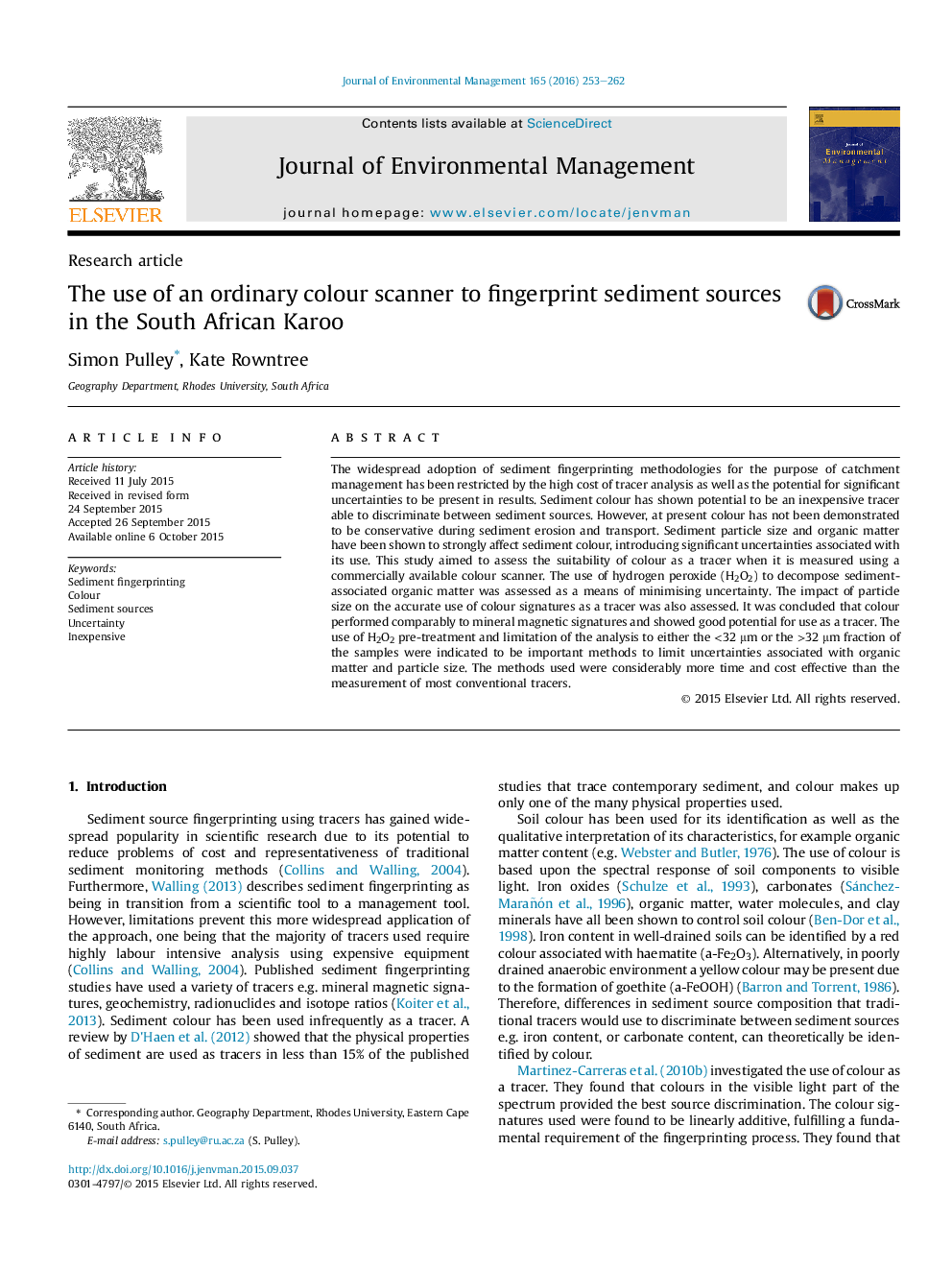| Article ID | Journal | Published Year | Pages | File Type |
|---|---|---|---|---|
| 1055496 | Journal of Environmental Management | 2016 | 10 Pages |
•Colour signatures produced a comparable sediment provenance to magnetic signatures.•Organic matter and particle size are sources of uncertainty associated with colour.•Sieving to <32 μm and treating with H2O2 showed potential for reducing uncertainty.•An ordinary colour scanner can be a fast inexpensive and reliable tracing tool.
The widespread adoption of sediment fingerprinting methodologies for the purpose of catchment management has been restricted by the high cost of tracer analysis as well as the potential for significant uncertainties to be present in results. Sediment colour has shown potential to be an inexpensive tracer able to discriminate between sediment sources. However, at present colour has not been demonstrated to be conservative during sediment erosion and transport. Sediment particle size and organic matter have been shown to strongly affect sediment colour, introducing significant uncertainties associated with its use. This study aimed to assess the suitability of colour as a tracer when it is measured using a commercially available colour scanner. The use of hydrogen peroxide (H2O2) to decompose sediment-associated organic matter was assessed as a means of minimising uncertainty. The impact of particle size on the accurate use of colour signatures as a tracer was also assessed. It was concluded that colour performed comparably to mineral magnetic signatures and showed good potential for use as a tracer. The use of H2O2 pre-treatment and limitation of the analysis to either the <32 μm or the >32 μm fraction of the samples were indicated to be important methods to limit uncertainties associated with organic matter and particle size. The methods used were considerably more time and cost effective than the measurement of most conventional tracers.
